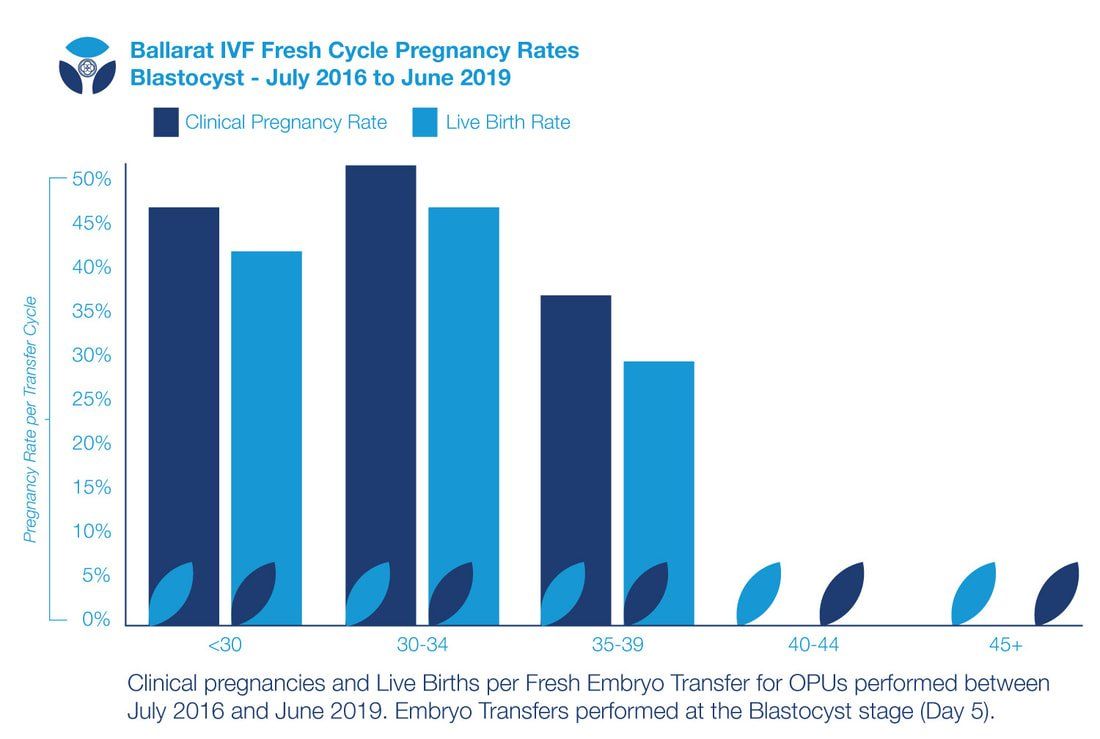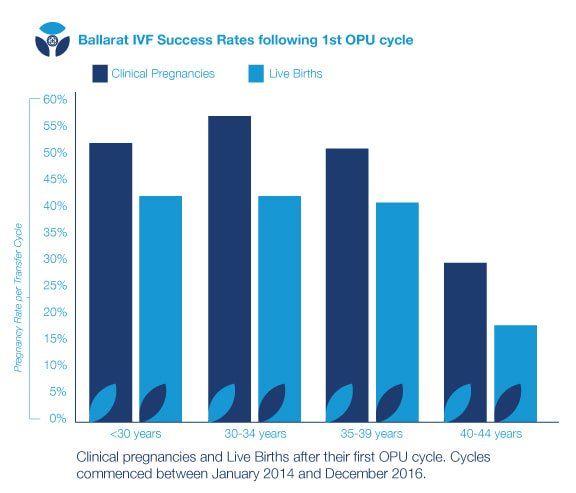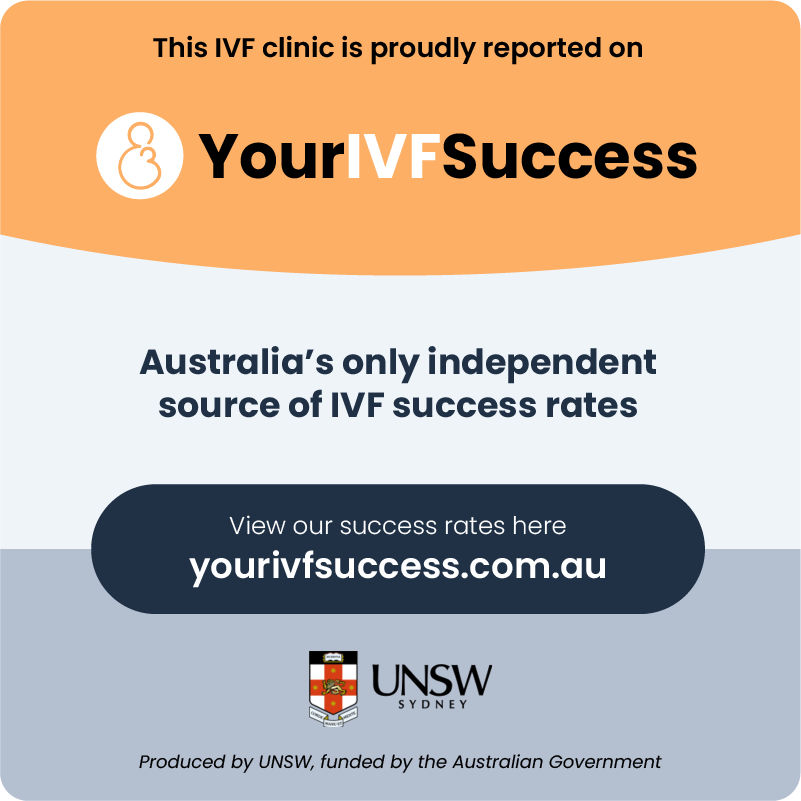Success Rates
The Doctors at Ballarat IVF are often asked, “what are my chances of having a baby with Assisted Reproduction, or IVF?". This is a very difficult question to accurately answer, as every couple’s clinical circumstances, and the factors contributing to their infertility, differ.
To state the obvious, every woman, and or couple have a “fertility problem”, and often have a number of problems, contributing to their lack of success in conceiving. Your individual success rates may be affected by numerous factors such as age, lifestyle factors (including weight and smoking), genetic factors and causes of infertility.
The best reference points to use are age related break downs of success rates, and to “overlay” this information with your fertility specialist’s experience with your circumstances. When an IVF unit, or group of Units report, or publish results, the information presented can often be difficult to apply to individual patients or couples.
Many individual circumstances will affect your individual results.Most comparisons between IVF services refer to Clinical Pregnancy Rates. A “clinical pregnancy” is defined as a pregnancy sac in the uterus, a miscarriage, an ectopic pregnancy, or, an ongoing viable pregnancy.
A more useful piece of information to couples considering assisted reproduction, is the live birth rate per embryo transfer, or the cumulative likelihood of a LIVE BIRTH of a baby from a stimulation cycle. The latter means the likelihood of a live birth when a woman undergoes a stimulation cycle, embryos are formed, and embryos are transferred, one at a time until a pregnancy and live birth occurs.
We are proud to report that the cumulative LIVE BIRTH rates after one stimulation cycle at Ballarat IVF between 2016 and 2019, was around 40%, and if a woman had a second IVF stimulation cycle, 70% of women achieved a live birth. Besides having a live birth, many of these women still have frozen embryos stored for their next pregnancy.
It is important to note that not every treatment cycle will result in an egg collection, embryo transfer or have any embryos suitable for cryopreservation. These outcomes can be discussed with you during one of your fertility appointments.
Please see the following tables for age related breakdowns of Live Birth rates from a number of perspectives, and the Cumulative pregnancy and Live birth rates.
For further information on interpreting success rates you can refer to the FSA guide
This information relates to fresh embryo transfer of day 2 or day 3, or blastocyst stage embryos, with 96% of embryo transfers being single embryo transfer.
Birthday Sparks
This information relates to day 5, Blastocyst stage transfer of fresh embryos, with 98% of transfers being Single embryo transfer.
This data relates to day 2, day 3 or day 5 Blastocyst frozen embryo transfer. Note that all frozen embryo transfers in women over 45 years of age were of embryos created from donor eggs.
This data related to the cumulative pregnancy and live birth rates for women undergoing their first IVF stimulation cycle at Ballarat IVF, and subsequent embryo transfer with embryos created from their
own eggs.
Approximately 35% had previous treatment at other clinics.
The end points for outcomes were utilization of all embryos, or a live birth during the process of utilizing embryos.
A number of patients achieved a live birth, and still had embryos frozen.







